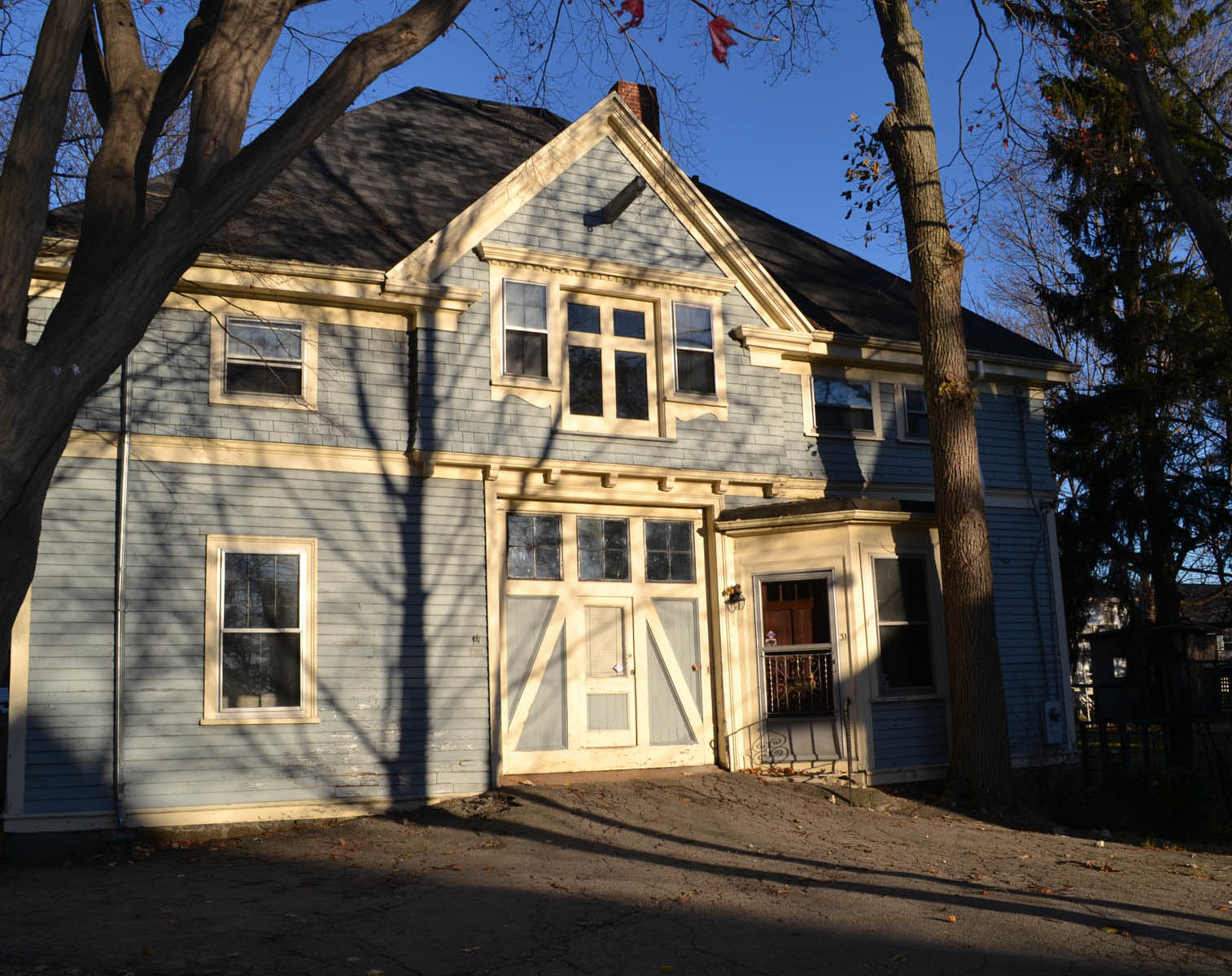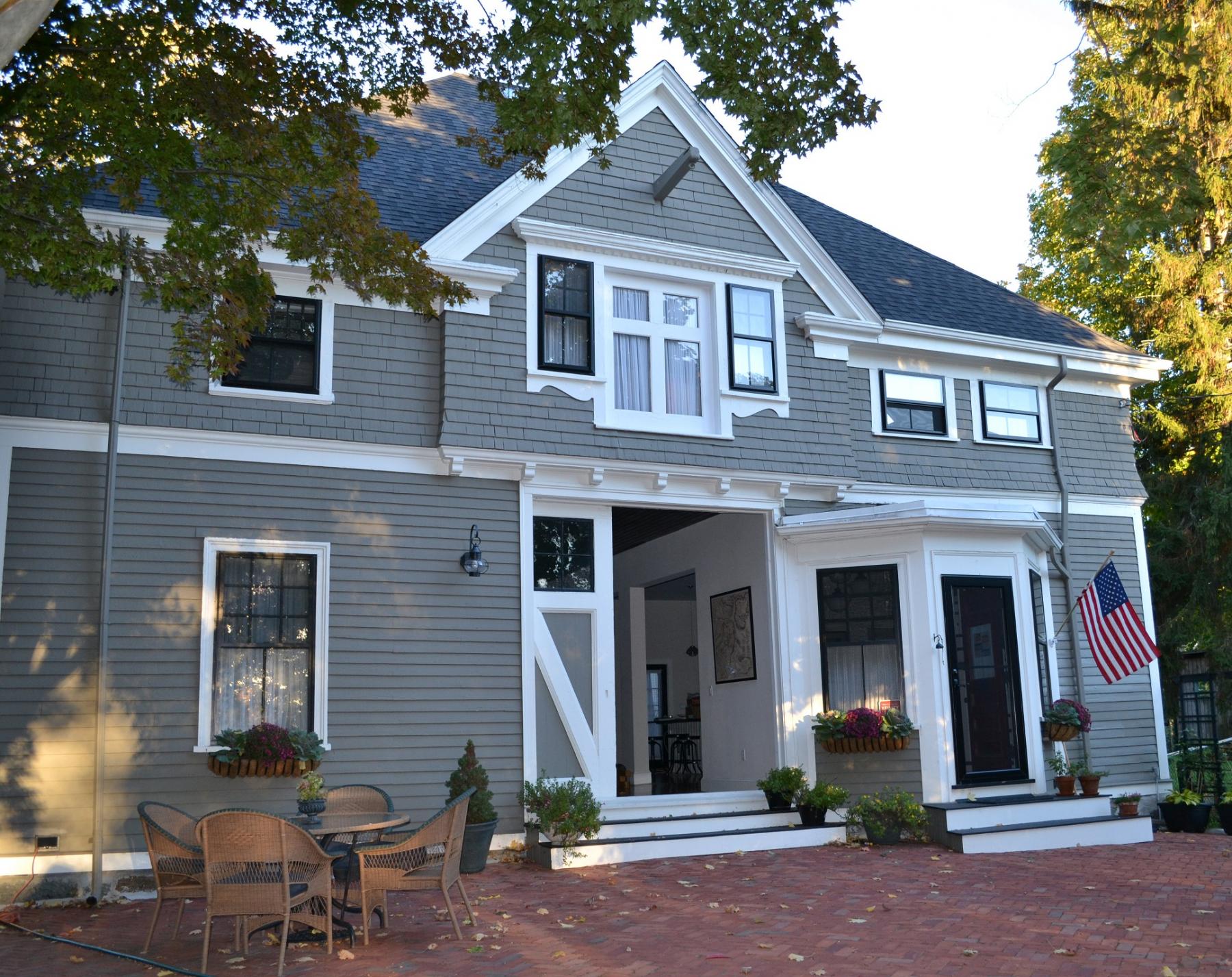42.2863323, -71.0666997
In 1894 when this charming carriage house was constructed, ancillary buildings like it were as commonplace as garage doors and tool sheds are today. Not only did they serve as places to store valuable horses, carriages, carts, and various accoutrements, they often doubled as housing for household staff. Furthermore, most homeowners took pride in these accessory buildings and designed them with the same style and details of the main residence. As horses gave way to engines, carriage houses transitioned to carports and attached garages. Many carriage houses and barns were used for general storage and, over time without maintenance, deteriorated or were demolished. Sadly, as we lose these structures, we also lose the history of travel, neighborhood development, and everyday life that went with them. We lose a sense of neighborhood development and their architectural charm. Today, zoning regulations make these types of structures difficult to repurpose and therefore they continue to be lost in large numbers throughout the city.
This project demonstrates how these buildings can serve a new use. Fortunately for this dainty carriage house on Ashmont Hill, the lot on which it sits was subdivided from the main house in the 1960s, thus allowing a separate owner to purchase and live within it. Minimal changes were made at the time, but when the current owner purchased it in 2013, she recalls that friends and family struggled to see beyond the termite and powder post beetle damage, the trees growing out of the foundation, or the unmistakable odor of urine still lingering in the horse stalls. But she had a vision. With patience and dedication, the new owner was able to restore much of the historic fabric: wooden beadboard, original interior doors, and the large, sliding carriage house door itself. Materials that could not be salvaged were recreated. Now, this beautiful home is a charming reflection of its original purpose, to be cherished for years to come.
“At a time when we need more housing, we need to look at every piece of the puzzle, and when we can also save contributors to the historic character of our neighborhoods who can argue? This carriage house benefited from unique circumstances being on its own lot, but imagine if the barns and carriage houses hidden throughout the city could be rehabilitated as beautifully as this one. These buildings could be much desired small homes and stand as testimony to the history, development, and adaptability of our historic neighborhoods,” said Greg Galer, Executive Director of the Boston Preservation Alliance.



